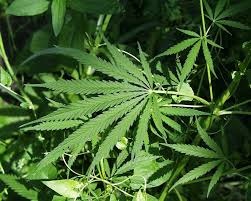Limonene stands as one of the most recognizable and abundant terpenes in cannabis, bringing distinctive citrus aromas and potentially beneficial properties to strains that express this compound in significant concentrations. Understanding limonene’s role in cannabis helps consumers select products that match their preferences for both flavor experiences and desired effects, while appreciation for this terpene’s characteristics enhances overall cannabis knowledge.
Terpenes like limonene represent essential components of cannabis that contribute far more than simple aromatic qualities. These compounds potentially influence how cannabinoids affect consumers, create the distinctive sensory experiences that differentiate various strains, and may offer benefits independent of THC or CBD. Learning about limonene provides foundation for understanding broader cannabis chemistry and making informed decisions about product selection.
What Is Limonene?
Limonene is a naturally occurring terpene compound found abundantly in cannabis and many other plants, particularly citrus fruits where it creates the characteristic scent of lemon, orange, and grapefruit peels. This organic compound belongs to the monoterpene class, meaning its molecular structure consists of two isoprene units creating a relatively simple but highly aromatic molecule.
The limonene terpene exists in two forms called enantiomers: d-limonene and l-limonene. Cannabis produces primarily d-limonene, the version responsible for the bright, uplifting citrus scent that characterizes limonene-rich strains. This molecular structure makes limonene volatile, meaning it easily evaporates at room temperature, contributing to the immediate aromatic impact when opening containers of limonene-dominant cannabis.
Plants produce limonene terpene and other aromatic compounds in specialized structures called trichomes. In cannabis, these tiny, mushroom-shaped glands cover flower surfaces, creating the sticky, crystalline appearance of quality buds. Trichomes synthesize terpenes as part of plants’ natural processes, potentially serving functions including pest deterrence, attracting pollinators, or protecting against environmental stressors.
The presence of limonene in cannabis varies significantly between different strains and even among plants of the same strain grown under different conditions. Some varieties naturally produce high limonene concentrations as part of their genetic characteristics, while others express different terpene profiles. Environmental factors, cultivation practices, and harvest timing all influence final limonene levels in cannabis product
What Does Limonene Do in Cannabis?
Limonene contributes multiple important functions in cannabis, affecting both the sensory experience and potentially the effects consumers experience. Understanding what limonene does helps explain why this terpene receives attention from consumers, cultivators, and researchers interested in cannabis chemistry.
The most obvious role of limonene involves creating the characteristic citrus aroma that defines limonene-rich cannabis strains. This bright, uplifting scent makes strains high in limonene immediately recognizable and appealing to consumers who enjoy citrus flavors. The aromatic contribution of limonene extends to taste as well, with limonene-dominant strains typically offering pronounced citrus notes during consumption.
Beyond sensory qualities, limonene may influence the overall effects cannabis produces through interactions with cannabinoids and the body’s endocannabinoid system. Research into terpene effects remains ongoing, but some studies suggest that limonene might contribute to mood elevation, stress relief, and energy that many users report from limonene-rich strains. These potential effects could explain why consumers often associate high limonene strains with uplifting, daytime-appropriate experiences.
Limonene potentially affects how THC and other cannabinoids cross the blood-brain barrier and interact with receptors, though scientific understanding of these interactions continues developing. This terpene-cannabinoid relationship, sometimes called the entourage effect, suggests that cannabis components work together synergistically rather than producing isolated effects. The presence of limonene and other terpenes may modify cannabis experiences in ways that pure THC alone wouldn’t create.
The benefits of limonene extend to practical considerations like shelf stability and product quality. This terpene’s chemical properties may help preserve cannabis by providing some antimicrobial effects, though proper storage practices remain essential for maintaining product quality regardless of terpene content.
Cultivation Factors That Influence Limonene Levels
The concentration of limonene in cannabis results from complex interactions between genetic factors and environmental conditions during cultivation. Understanding these influences helps explain why the same strain grown in different conditions might express varying limonene levels, and why cultivation practices matter for producing limonene-rich products.
Genetics provides the foundation for limonene production, with some strains naturally programmed to synthesize high concentrations of this terpene while others favor different terpene profiles. Selecting genetics from known limonene terpene strains provides cultivators with starting material predisposed to producing citrus-dominant products. However, genetic potential alone doesn’t guarantee high limonene levels without appropriate growing conditions.
Light exposure significantly influences terpene synthesis in cannabis plants. Adequate lighting intensity and appropriate spectrums support trichome development where terpenes form. However, excessive heat from lighting can degrade delicate terpenes, including limonene, making temperature management crucial for preserving terpene content throughout cultivation.
Nutrient availability affects overall plant health and metabolism, indirectly influencing terpene production. Plants receiving balanced nutrition with appropriate levels of nitrogen, phosphorus, potassium, and micronutrients develop more robustly and potentially synthesize terpenes more efficiently than nutrient-deficient plants. However, excessive nutrients, particularly nitrogen late in flowering, may negatively impact terpene development.
Temperature and humidity control during flowering influence terpene synthesis and preservation. Moderate temperatures in the 65-80°F range typically support optimal terpene production, while excessive heat can cause terpene loss through volatilization. Appropriate humidity levels prevent mold while supporting healthy plant development that enables robust terpene synthesis.
Harvest timing critically impacts final limonene levels in cannabis products. Terpene concentrations fluctuate as plants mature, with different terpenes peaking at different stages. Harvesting when limonene reaches peak concentration requires monitoring plants closely and understanding the specific variety’s maturation characteristics. Delaying harvest too long can result in terpene degradation that diminishes the citrus character limonene provides.
Post-harvest handling and curing procedures affect how much limonene survives from plant to final product. Proper drying that removes moisture without excessive heat preserves terpenes that might otherwise volatilize. Careful curing in controlled conditions allows chemical processes that can enhance terpene expression while preventing degradation. Throughout processing, gentle handling that minimizes trichome damage helps preserve the terpenes these structures contain.
Identifying Limonene in Cannabis Products
Recognizing limonene presence in cannabis products helps consumers select options that match their preferences for citrus flavors and the potential effects associated with this terpene. Several indicators help identify limonene-rich products before purchase and consumption.
Aroma provides the most immediate indicator of limonene content. Cannabis products rich in this terpene emit pronounced citrus scents ranging from sweet orange to tart lemon or tangy grapefruit. Opening a container of high limonene cannabis releases these distinctive aromas immediately, creating unmistakable citrus impressions that signal significant limonene presence.
Strain names sometimes indicate limonene content, though names alone don’t guarantee specific terpene profiles. Strains with “lemon,” “citrus,” or similar citrus references in their names frequently feature high limonene levels, though verification through testing or sensory evaluation provides more reliable confirmation than names alone.
Laboratory testing results, when available on product packaging or through dispensary information systems, provide definitive data about terpene content. These analyses quantify limonene concentrations in milligrams per gram or as percentages of total terpene content, allowing direct comparison between products. Look for products listing limonene among the top three terpenes or showing concentrations above 1-2% for pronounced citrus character.
Visual inspection offers limited but sometimes useful information about potential limonene content. While terpenes themselves remain invisible, their presence in trichomes means that products with heavy trichome coverage potentially contain more total terpenes including limonene. However, trichome density doesn’t indicate specific terpene profiles, making this indicator suggestive rather than definitive.
Taste during consumption confirms limonene presence through citrus flavors that match aromatic impressions. Limonene-rich products deliver pronounced citrus notes on the palate, creating flavor experiences that distinguish these strains from varieties dominated by other terpenes. This sensory feedback helps consumers identify preferences for limonene that can guide future product selections.
Limonene Terpene Benefits
Research into limonene terpene benefits continues exploring various potential effects this compound might offer, both within cannabis contexts and as an isolated compound. While scientific understanding remains incomplete, existing studies suggest several areas where limonene might provide beneficial properties.
Mood elevation represents one of the most commonly cited limonene benefits, with some research indicating that this terpene might help reduce stress and promote positive emotional states. Animal studies have shown potential anxiolytic effects from limonene exposure, suggesting mechanisms that could explain why consumers often report uplifting experiences from strains high in limonene. However, human research specifically examining limonene’s mood effects remains limited.
The benefits of limonene may extend to antimicrobial properties demonstrated in laboratory settings. Studies have shown that limonene can inhibit growth of certain bacteria and fungi, suggesting potential applications in infection control or preservation. Within cannabis contexts, these antimicrobial properties might help protect products from contamination, though proper handling and storage practices remain essential regardless of terpene content.
Digestive support represents another area where limonene shows potential benefits. This terpene has demonstrated properties that might help relieve heartburn, support healthy digestion, and reduce gastrointestinal discomfort in some research contexts. These effects might make limonene-rich cannabis strains appealing to consumers seeking digestive wellness support, though specific cannabis research in this area remains limited.
Anti-inflammatory effects suggested by preclinical research indicate that limonene might help reduce inflammation through various biological mechanisms. While much of this research involves isolated limonene rather than cannabis consumption, these findings contribute to interest in limonene as a potentially beneficial cannabis component beyond simple aromatic contributions.
Absorption enhancement represents a practical benefit where limonene might help other compounds penetrate tissues more effectively. This property could potentially influence how cannabinoids and other cannabis components absorb when limonene is present, contributing to the entourage effect where terpenes modify overall cannabis experiences.
Limonene and Linalool: Comparing Two Popular Terpenes
Limonene and linalool represent two of the most prevalent and recognized terpenes in cannabis, each bringing distinctive characteristics to strains that express them. Comparing these compounds helps consumers understand how different terpene profiles create varied cannabis experiences.
Aromatic profiles provide the most obvious distinction between limonene and linalool. Limonene creates bright, uplifting citrus scents reminiscent of lemon and orange peels, while linalool produces floral, lavender-like aromas with subtle spicy undertones. These contrasting scent profiles make strains dominated by each terpene easily distinguishable and appealing to different sensory preferences.
The potential effects associated with limonene and linalool differ based on their distinct chemical properties and biological activities. Users often report that strains high in limonene deliver energizing, mood-elevating experiences appropriate for daytime use and social activities. Linalool-dominant strains more frequently associate with relaxing, calming effects that many consumers prefer for evening use or stress relief. These effect differences, while subjective and not universally experienced, influence how consumers select between limonene and linalool strains.
Some cannabis varieties express both limonene and linalool in significant concentrations, creating complex terpene profiles that combine citrus and floral characteristics. These balanced terpene compositions might produce effects that blend the uplifting qualities attributed to limonene with the calming properties associated with linalool, creating versatile strains suitable for various situations.
The stability of these terpenes differs, with limonene being somewhat more volatile and prone to degradation from heat and light exposure compared to linalool. This difference affects how products maintain their terpene profiles during storage and processing, making proper handling particularly important for preserving limonene-rich cannabis.
Both terpenes appear in numerous non-cannabis plants and products, with limonene abundant in citrus fruits and cleaning products, while linalool features prominently in lavender, mint, and many cosmetic applications. This shared presence across plant species explains why cannabis consumers might recognize these scents from familiar everyday sources.
Limonene Terpene Strains in Cannabis
Numerous cannabis varieties naturally produce high limonene concentrations, creating the citrus-forward products that appeal to consumers seeking this terpene’s distinctive characteristics. Understanding which strains typically express significant limonene helps guide product selection for those who appreciate citrus flavors and the potential effects associated with this terpene.
Lemon-named strains frequently feature prominent limonene profiles, with varieties like Lemon Haze, Super Lemon Haze, and Lemon Kush often testing high in this citrus terpene. These genetics have been specifically bred and selected partly for their pronounced lemon characteristics, making them reliable choices for consumers seeking limonene-rich products.
Sour Diesel represents a classic example of high limonene strains that don’t reference citrus in their names. This legendary variety combines pronounced limonene presence with other terpenes creating its signature fuel and citrus aroma profile. The energizing effects many users report from Sour Diesel align with the uplifting qualities often attributed to limonene-dominant strains.
OG Kush and its many descendants frequently express significant limonene alongside other terpenes, creating the complex profiles that have made OG genetics incredibly popular. While not purely citrus-dominant, the limonene presence in OG varieties contributes to their distinctive aroma and potentially to their beloved effects.
Durban Poison, a pure sativa landrace strain, often features limonene as a primary terpene component. This variety’s energizing effects and sweet, piney aroma with citrus undertones exemplify how limonene contributes to uplifting cannabis experiences.
Wedding Cake and related dessert strains sometimes express notable limonene alongside their sweet, creamy terpene profiles. These modern hybrids demonstrate how breeders continue developing new varieties that incorporate limonene into complex terpene compositions.
Testing results provide the most reliable way to confirm limonene levels in specific products, as terpene expression can vary between different phenotypes of the same strain and between growing conditions. Consumers seeking guaranteed high limonene content should look for laboratory-tested products listing limonene prominently in terpene profiles.
What Is Limonene Used For Beyond Cannabis?
Limonene applications extend far beyond cannabis, with this versatile terpene appearing in numerous commercial products and industrial applications. Understanding what is limonene used for in broader contexts illustrates this compound’s versatility and explains its widespread presence across various industries.
Cleaning products represent one of the most common commercial applications for limonene, with this terpene’s solvent properties and pleasant citrus scent making it valuable in household and industrial cleaning formulations. Many natural or environmentally-focused cleaning products feature limonene as an active ingredient, utilizing its ability to dissolve oils and remove residues while leaving fresh citrus aromas.
Cosmetics and personal care products frequently incorporate limonene for both its fragrance and potential skin benefits. This terpene appears in perfumes, lotions, soaps, and other formulations where its citrus scent enhances product appeal. However, some individuals experience skin sensitivity to limonene, requiring caution and proper testing when using products containing this compound.
Food and beverage industries utilize limonene as a flavoring agent, adding citrus notes to various products. From soft drinks to baked goods, limonene contributes the authentic citrus flavors consumers expect in lemon and orange-flavored items. The Generally Recognized as Safe (GRAS) status limonene holds for food use reflects extensive safety evaluation for this application.
Aromatherapy practices employ limonene for its uplifting, mood-enhancing qualities. Essential oils rich in limonene, particularly those derived from citrus peels, feature prominently in aromatherapy applications aimed at reducing stress, improving mood, and creating energizing environments. These uses parallel the effects some cannabis consumers report from limonene-rich strains.
Industrial applications utilize limonene as a solvent and degreaser in various manufacturing and maintenance contexts. Its ability to dissolve certain materials while offering biodegradability and lower toxicity compared to some traditional solvents makes limonene attractive for environmentally conscious industrial operations.
Pest control represents another application where limonene shows utility. This terpene’s insecticidal properties make it useful in some natural pest management products, offering alternatives to synthetic pesticides for certain applications. The same properties that might help cannabis plants deter pests translate to broader agricultural and household pest control uses.



